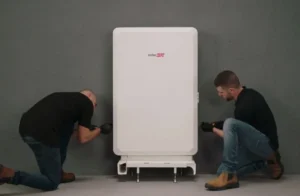Germany’s parliament has approved a plan that will end renewable energy feed-in tariffs in favor of competitive auctions and clear volumes for wind energy development.

 It was revealed in early June that Germany’s Chancellor Angela Merkel had hammered out a new agreement with state leaders to restrict onshore wind expansion to 2.8 GW per year, putting a clear cap on the volume of wind energy development. It is expected that the limit for onshore wind will increase after 2020 to 2.9 GW per year, while the offshore cap (applicable from 2021 to 2030) will vary from year to year to ensure that Germany reaches its 15 GW wind energy target by 2030.
It was revealed in early June that Germany’s Chancellor Angela Merkel had hammered out a new agreement with state leaders to restrict onshore wind expansion to 2.8 GW per year, putting a clear cap on the volume of wind energy development. It is expected that the limit for onshore wind will increase after 2020 to 2.9 GW per year, while the offshore cap (applicable from 2021 to 2030) will vary from year to year to ensure that Germany reaches its 15 GW wind energy target by 2030.
The new reforms, which also include repowering older turbines, is expected to come into effect in January 2017.
“For onshore wind, the reforms set out clear volumes for wind energy deployment toward 2020 and beyond,” said Giles Dickson, CEO of WindEurope. “This gives the industry a degree of certainty on investments and the opportunity to plan into the future.
“The same cannot be said for offshore where there is a lack of stability in the volumes. The buildout rate after 2020 will be uneven as the auctions vary in size from year to year. The volumes are also less ambitious than other Member States such as the UK, which has committed to 1GW a year to 2030 and the Netherlands, which will tender 1.4GW this year and then a further 700MW each year to 2020.”
This move was confirmed by the country’s parliament this week, in addition to ending feed-in tariffs for renewable energy technology, in favor of competitive auctions — a trend being seen played out across Europe.
“The shift from feed-in tariffs to tenders is a trend we are seeing across Europe,” added Dickson. “Germany’s move was to be expected as Member States bring their support schemes into line with the European Commission’s state aid guidelines.”
Source: CleanTechnica. Reproduced with permission.










